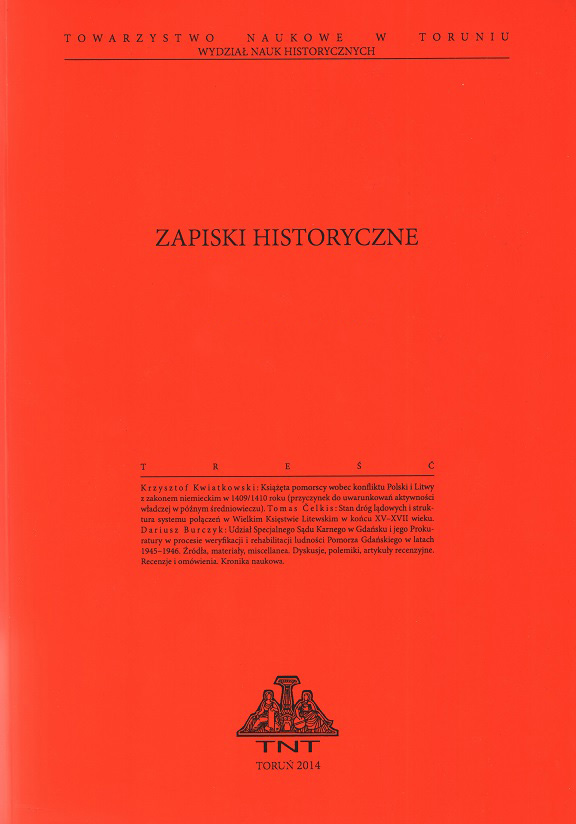Where Was the Home of the Livonian Merchant? Early Urban Mobility in the Baltics
Where Was the Home of the Livonian Merchant? Early Urban Mobility in the Baltics
Author(s): Anti SelartSubject(s): Cultural history, Economic history, Social history, Middle Ages
Published by: Towarzystwo Naukowe w Toruniu
Keywords: Hanseatic League;Livonia;social relations;migrations;the Middle Ages;
Summary/Abstract: Medieval Livonia and its town life were created in the 12th and 13th centuries as a result of crusading conquests. Livonian urban elites immigrated mostly from German lands. A small number of people of indigenous origin were also integrated into the emerging merchant class. Besides merchants who settled down in Riga, Tallinn, Tartu, or in other towns in the region, travelling merchants from the western part of the forming Hanseatic area played an important role in the urban life and even in the urban administration. On the basis of anthroponyms and geographical identifications of medieval townspeople, the author of the article argues that the migration patterns were not limited to immigration from Germany to Livonia. The social and spatial integration of this region resulted from multiple ways of travelling and relocation: people also returned to Germany or remained simultaneously connected to several places and sometimes remained permanently mobile. Early Livonian merchants could also be mobile within the area including minor towns and even rural places. Not only the “Germans”, but also people of native origin were involved in these movements. The family networks in particular supported multiple spatial identifications. An economically active person could have many places of identification; moving from one town to another during a lifetime was the rule, not an exception. However, the existing network of family and kinship relations, which provided trustworthy partners in the vast area from Westphalia to Livonia, was probably one of the main factors which made German merchants enjoy an advantage over their Scandinavian and Livonian native counterparts.
Journal: Zapiski Historyczne
- Issue Year: 84/2019
- Issue No: 1
- Page Range: 43-66
- Page Count: 24
- Language: English

